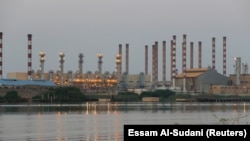In its new annual report published on Monday, July 13, the Organization of Petroleum Exporting Countries (OPEC) announced Iran's revenue from total crude oil exports and oil products in 2019 was just over $19 billion, less than a third of the previous year.
Iran's income from selling oil and oil products amounted to 60.5 billion in 2018, while it was $110 billion in 2011.
In the meantime, OPEC's new annual report says Iran's average daily crude oil exports last year were 651,000 barrels per day, of which about 60,000 barrels went to Turkey and the rest to Asia. In 2018, the figure was 1.85, and in 2017 more than 2.1 million barrels per day.
Iran was able to export around one million bpd until May 2019, when the United States tightened its sanctions, banning all oil exports from Iran, cutting its exports in the second half of the year.
Iran also exported about 285,000 BPD of oil products (diesel and fuel oil) last year.
Iranian government officials say revenues from Iran's crude oil exports last year were less than $9 billion, excluding oil products, in the Iranian calendar year, beginning March 20, 2019.
Based on data provided by Kpler, an international data intelligence company to Radio Farda Iran's crude oil exports in the second quarter of 2020 averaged 187,000 BPD, compared with about 294,000 BPD last winter, and 976 thousand BPD in the second quarter of 2019.
If Iran's crude oil exports remain at the level of the second quarter of 2020, Tehran's oil revenues, given current prices, are expected to be just over $ 2 billion in the current Iranian solar year (March 20, 2020-2021). This means only eleven percent of Iran's targeted revenue will likely be realized, and the Islamic Republic's government will face a massive budget deficit.
OPEC says Iran's total oil and non-oil exports reached $ 69 billion last year, down about a third from 2018.
Simultaneously, the International Monetary Fund (IMF) forecast shows that Iran's total exports will drop to $ 46 billion, and imports will be $ 64.6 billion in 2020.
Consequently, for the first time, Iran's foreign trade balance is expected to be negative in 2020.
With ten percent of the world's proven oil reserves and fifteen percent of its gas reserves, Iran is considered an "energy superpower."





